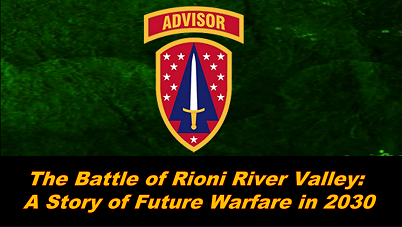[Editor’s Note: Army Mad Scientist welcomes returning guest blogger MAJ James P. Micciche, G-5 at the Security Force Assistance Command (SFAC), with today’s fictional intelligence (FICINT) submission. MAJ Micciche’s effective use of storytelling explains the mission of the U.S. Army’s Security Force Assistance Brigades (SFABs) and their critical role in operationalizing both the Multi-Domain Operations (MDO) concept and the National Defense Strategy’s core tenet of integrated deterrence. “Trust and interoperability cannot be surged and the ability to rapidly build and leverage combined integrated combat power is predicated on the daily activities of SFABs’ objective based campaigning.” Read on to learn how SFABs can help the Army overcome the twin tyrannies of Time and Distance!]
07 January 2030 – IVO Kutasi, Gorgas – CPT Young (Fires Advisor Team 4511)
 As dawn’s first light slowly eclipsed the distant mountains and crept across the Rioni River Valley, the four Fires Advisor Team (FAT) members of the Security Force Assistance Brigade (SFAB) took off their night vision goggles, slowly letting their eyes adjust to the ever-growing brightness. The haze of green wore away and warm colors returned as the team left a Gorganian mobile fire direction center, which had been their home the last 12 hours. With the
As dawn’s first light slowly eclipsed the distant mountains and crept across the Rioni River Valley, the four Fires Advisor Team (FAT) members of the Security Force Assistance Brigade (SFAB) took off their night vision goggles, slowly letting their eyes adjust to the ever-growing brightness. The haze of green wore away and warm colors returned as the team left a Gorganian mobile fire direction center, which had been their home the last 12 hours. With the 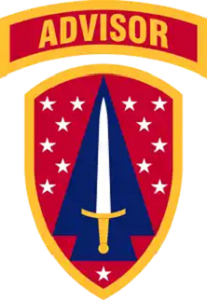 normalization of their vision, the landscape littered with shattered tanks finally matched the smell of burning diesel and the crackling fires that had been present since last night’s action. The team surveyed the cratered lowlands where a converted armored personnel carrier idled. A tall man with a beaming smile followed by an entourage of security quickly moved to intercept them. “General!” the Team Leader crisply stated, stopping short.
normalization of their vision, the landscape littered with shattered tanks finally matched the smell of burning diesel and the crackling fires that had been present since last night’s action. The team surveyed the cratered lowlands where a converted armored personnel carrier idled. A tall man with a beaming smile followed by an entourage of security quickly moved to intercept them. “General!” the Team Leader crisply stated, stopping short.
“Captain Young, I have never seen death rain from the sky like that before. I swear you and your Advisors can operate more radios than you have hands!” Major General Berdize, the Commander of the 2nd Gorgan Combined Arms Division exclaimed as he removed his bloodstained gloves and outstretched his hand. Grasping the Division Commander’s hand, Captain Young used her other to gesture toward the distant engagement area, “Sir, all of this was only possible because of the information your units provided throughout the night. This is your victory.” Grinning, the General gazed North towards the front lines and with unwavering confidence proclaimed, “More good days are to come. We stopped the Donovian’s attempt to take Poti, but the war is not over. We have more work to do as we bring this fight to the invader.”
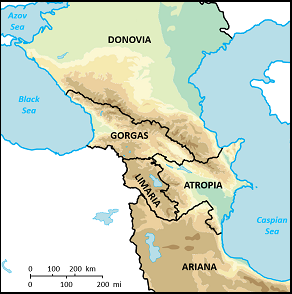 The following fictitious story uses the Decisive Action Training Environment’s (DATE’s) Caucasus training data set to outline how long-term objective-based advising conducted through purpose-built formations, such as SFABs, rapidly enable combined and integrated combat power at the point of crisis or conflict. This story culminates in the battle above, but it also highlights how the capabilities provided by SFABs across the competition continuum mitigate the strategic dilemmas of time and distance and are critical to operationalizing the underlying goal of the 2021 Interim National Security Strategic Guidance (INSSG) — “revitalize America’s unmatched network of alliances and partnerships.” Moreover, the story demonstrates the role of Security Force Assistance in the MDO-capable Army of 2030 and how the collective actions of individual Advisors are critical in achieving integrated deterrence and campaigning, two of the three foundational concepts of the 2022 National Defense Strategy (NDS).
The following fictitious story uses the Decisive Action Training Environment’s (DATE’s) Caucasus training data set to outline how long-term objective-based advising conducted through purpose-built formations, such as SFABs, rapidly enable combined and integrated combat power at the point of crisis or conflict. This story culminates in the battle above, but it also highlights how the capabilities provided by SFABs across the competition continuum mitigate the strategic dilemmas of time and distance and are critical to operationalizing the underlying goal of the 2021 Interim National Security Strategic Guidance (INSSG) — “revitalize America’s unmatched network of alliances and partnerships.” Moreover, the story demonstrates the role of Security Force Assistance in the MDO-capable Army of 2030 and how the collective actions of individual Advisors are critical in achieving integrated deterrence and campaigning, two of the three foundational concepts of the 2022 National Defense Strategy (NDS).
3 Months Ago…
15 October 2029 – Tbilisi, Gorgas – LTC David (Battalion Advisor Team 410)
A new Force Package of SFAB Advisors has arrived in EUCOM. Over 200 Advisors task-organized into maneuver, fires, engineer, and logistics Advisor Teams pick up where the last rotation left off: expanding the global land power network, building partner capacity and capability, improving interoperability 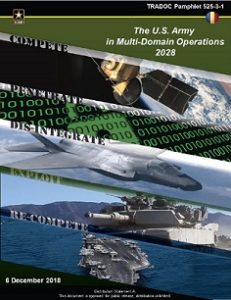 with allies and partners, and demonstrating U.S. commitment and support. Over the next six-months, their unique skill set; team capabilities; and unparalleled access, presence, and influence will be vital for the United States to achieve its political aims during a geopolitical crisis, enabling the Joint Force to prevail in combat and facilitating the Army’s ability to conduct Multi-Domain Operations against a peer competitor. From campaigning to crisis and crisis to conflict, these 200-plus Advisors will consistently provide the Joint Force the positional, informational, and decisional advantage needed to win the 2030 Donovian-Gorgas War.
with allies and partners, and demonstrating U.S. commitment and support. Over the next six-months, their unique skill set; team capabilities; and unparalleled access, presence, and influence will be vital for the United States to achieve its political aims during a geopolitical crisis, enabling the Joint Force to prevail in combat and facilitating the Army’s ability to conduct Multi-Domain Operations against a peer competitor. From campaigning to crisis and crisis to conflict, these 200-plus Advisors will consistently provide the Joint Force the positional, informational, and decisional advantage needed to win the 2030 Donovian-Gorgas War.
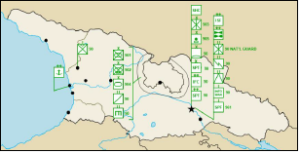
Soon after arriving in theater, LTC David, the SFAB Force Package Commander, knew something was different about this deployment — it was that quiet intensity right before a firefight, but on a far larger scale. He had deployed as an SFAB company commander to Gorgas five years ago as part of a multi-year effort to develop Gorgan brigade-level combined arms capabilities and support integration of newly purchased U.S. howitzers. He recalled the easygoing, yet attentive nature of his Gorgonian counterparts, the friendships he made with the brigade staff, and the satisfaction of watching their development over his six-months at the Supsa training center. That satisfaction motivated him to compete for a second Battalion Command in an SFAB, and now brought him back to Gorgas on what seemed like the eve of war.
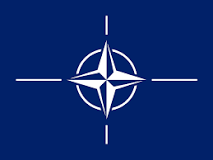 Two years ago, the Gorganian Government announced their desire to join NATO by 2030. Despite constant saber rattling and threats of “unheralded” repercussions from the Donovian government, the Gorgas Armed Forces (GAF) continued their Membership Action Plan (MAP). Weeks before LTC David’s arrival, Donovia began an unannounced exercise along Gorgas’ Northwest border, adjacent to the breakaway province of Zabzimek, fundamentally changing the nature of his mission. EUCOM expanded the SFAB-led Task Force Gulf from four teams to eight; adding a Logistics, Military Intelligence, Engineering, and multifunctional Maneuver Advisor Teams to the already planned Battalion,
Two years ago, the Gorganian Government announced their desire to join NATO by 2030. Despite constant saber rattling and threats of “unheralded” repercussions from the Donovian government, the Gorgas Armed Forces (GAF) continued their Membership Action Plan (MAP). Weeks before LTC David’s arrival, Donovia began an unannounced exercise along Gorgas’ Northwest border, adjacent to the breakaway province of Zabzimek, fundamentally changing the nature of his mission. EUCOM expanded the SFAB-led Task Force Gulf from four teams to eight; adding a Logistics, Military Intelligence, Engineering, and multifunctional Maneuver Advisor Teams to the already planned Battalion, 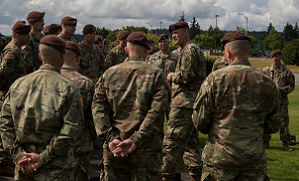 Fires, and Maneuver Teams. Furthermore, EUCOM tasked Task Force Gulf to rapidly improve U.S.-Gorgas interoperability in response to Donovian aggression in addition to building partner capacity.
Fires, and Maneuver Teams. Furthermore, EUCOM tasked Task Force Gulf to rapidly improve U.S.-Gorgas interoperability in response to Donovian aggression in addition to building partner capacity.
So on a crisp mid-October morning, LTC David walked to the Gorganian 2nd Division headquarters to begin his f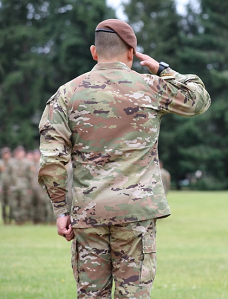 ormal advising role with the division staff. Feeling a buzz on his left wrist, he simultaneously flicked his wrist and moved his arm upwards to read the message on his Secure Hardened Individual Messenger (SHIM): “0947GST LAT4621 REPORTS ARRIVAL POTI. ALL TEAMS IN PLACE. XO.” Quickly dropping his hand to render a salute to the Gorganian Colonel walking out of the Division HQ, LTC David began to smile when he realized who was walking to him.
ormal advising role with the division staff. Feeling a buzz on his left wrist, he simultaneously flicked his wrist and moved his arm upwards to read the message on his Secure Hardened Individual Messenger (SHIM): “0947GST LAT4621 REPORTS ARRIVAL POTI. ALL TEAMS IN PLACE. XO.” Quickly dropping his hand to render a salute to the Gorganian Colonel walking out of the Division HQ, LTC David began to smile when he realized who was walking to him.
“David, they made you a Lieutenant Colonel! What has happened to the high standard of the mighty American Army?” the Colonel tightened his face in a feint of sternness attempting to hold back laughter. Fully smiling now, LTC David quickly responded, “Tamaz, I mean Sir! They said some hotshot Gorganian Division G3 wrote me a recommendation and that’s all I needed.” Throwing his arm around LTC David’s shoulder, Tamaz laughed aloud “Always with the jokes, it is good to see you again…” Then in mid-sentence, the Gorganian COL’s tone changed from jovial to eerily serious, as he looked LTC David in the eye with a piercing gaze he had never seen before from Tamaz. “But come now, my friend, much work is to be done. Time is not on our side.” They walked into the Division HQ reminiscing about their time together years ago and catching up on each other’s lives.
11 Days Ago…
29 December 2029 – IVO – Senaki, Gorgas – MAJ Armstrong (Military Intelligence Advisor Team 402)
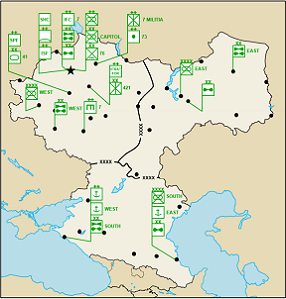
Over the last 3-months, Task Force Gulf’s focused advising efforts have led to marked improvements in the GAF’s combined arms and expeditionary logistics capabilities. Additionally, a series of combined and live fires exercises demonstrated a new level of GAF-US interoperability. In late-November, Gorgas formally applied to NATO and Donovia began a near simultaneous mobilization of their reserves and expansion of the exercise adjacent to the breakaway province of Zabzimek. By early December, EUCOM rapidly exploited both the interoperability and access, presence, and influence generated by Task Force Gulf and began forward staging equipment and limited personnel.
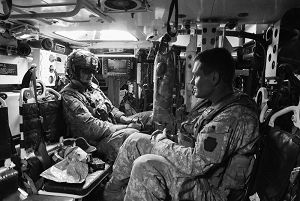 MAJ Armstrong — crammed into the tactical seats in the back of a modified Gorganian Stryker used as the 2nd Combined Arms Division’s G2 FWD — reminding himself why he hated his two years as an LT in an ABCT. “6’3 is too tall for this,” he muttered. Gritting his teeth as he readjusted himself in the tactical seats, he and the Division’s G2 stared intently at a series of recent EUCOM-provided satellite and UAS imagery overlaid on to a map of the Donovian-Gorgas border searching for meaning. As images continually cycled through, they remained single snapshots with no interconnected meaning. He knew the Donovians were up to something, they had just declared Zabzimek to be part of their sovereign territory, threatened to shoot down any additional U.S. troop transports entering Gorgas, and even forced two U.S. C-17s to turn around over the Black Sea, but the picture on the ground and at the border remained unclear.
MAJ Armstrong — crammed into the tactical seats in the back of a modified Gorganian Stryker used as the 2nd Combined Arms Division’s G2 FWD — reminding himself why he hated his two years as an LT in an ABCT. “6’3 is too tall for this,” he muttered. Gritting his teeth as he readjusted himself in the tactical seats, he and the Division’s G2 stared intently at a series of recent EUCOM-provided satellite and UAS imagery overlaid on to a map of the Donovian-Gorgas border searching for meaning. As images continually cycled through, they remained single snapshots with no interconnected meaning. He knew the Donovians were up to something, they had just declared Zabzimek to be part of their sovereign territory, threatened to shoot down any additional U.S. troop transports entering Gorgas, and even forced two U.S. C-17s to turn around over the Black Sea, but the picture on the ground and at the border remained unclear.
Just when frustration started to surface, the team’s Intelligence Warrant, CW2 Jackson, popped her head into the Stryker and shouted. “Sir, I’ve got the UAS feeds from the Maneuver Teams embedded with the Gorgonian BNs forward, the reports and data from the Gorgan scouts, and some OSINT captures from social media are integrating into your feed, now.”
Just like that, hundreds of new features integrated into the overlay, the AI marking threats and assigning icons. Like a myriad of broken tiles become a 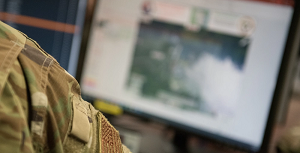 mosaic, chaos became order, and what was once obfuscated was now known. MAJ Armstrong looked at his counterpart and in unison they exclaimed, “They are going for Poti!”
mosaic, chaos became order, and what was once obfuscated was now known. MAJ Armstrong looked at his counterpart and in unison they exclaimed, “They are going for Poti!”
6 Days Ago…
01 January 2030 – IVO Senaki, Gorgas – LTC David (Battalion Advisor Team 410)
As he hung the phone up, Tamaz looked at him, keen to learn what he and the Joint Task Force leadership had just spoken about. Before his Gorgan counterpart could ask the inevitable question. LTC David answered. “They 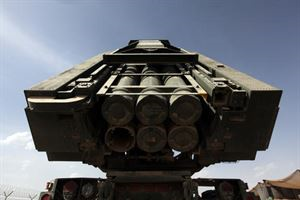 concur with Major General Berdize’s plan, but offer some recommendations to better integrate the HIMARS in Poti and the warships in the Black Sea to support your main effort. It is still going to be a while until we can get additional ground forces into the fight, but they are going to throw what they can at the decisive point and make this the most lethal division in the Gorgan Army. And Sir, we need to move fast from what they are seeing, it may be more like days and hours than weeks.”
concur with Major General Berdize’s plan, but offer some recommendations to better integrate the HIMARS in Poti and the warships in the Black Sea to support your main effort. It is still going to be a while until we can get additional ground forces into the fight, but they are going to throw what they can at the decisive point and make this the most lethal division in the Gorgan Army. And Sir, we need to move fast from what they are seeing, it may be more like days and hours than weeks.”
Tamaz breathed in long and slow, thinking through the information he had just received before turning to LTC David and in a cool calm matter stated. “Excellent, now call your teams with our 1st and 3rd Divisions, and I will call the division and corps G3s to begin planning.”
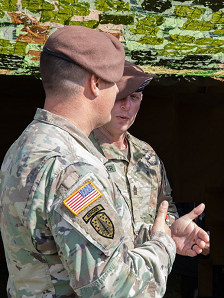 Part of the theater’s flexible deterrence option put in place before Donovia denied Gorgas airspace were eight more Advisor Teams now imbedded with other Gorgan divisions. LTC David’s Brigade Commander was also forward deployed as a liaison to the General Staff at the GAF HQ. Between active A2AD and cumbersome port operations in the threatened port of Poti, the U.S. currently could not get ground forces into this fight, but they would come soon enough. The Advisor Teams support to the partner force divisions would create the opportunity for the Joint Force to penetrate, dis-integrate, and exploit the Donovian A2AD strategy and allow U.S. ground forces to enter the fight. As he started to establish a secure connection to his fellow Battalion Advisor Team, Tamaz interrupted him, “Oh David, you are wrong about one thing…We are already the most lethal division in the Gorgan Army.”
Part of the theater’s flexible deterrence option put in place before Donovia denied Gorgas airspace were eight more Advisor Teams now imbedded with other Gorgan divisions. LTC David’s Brigade Commander was also forward deployed as a liaison to the General Staff at the GAF HQ. Between active A2AD and cumbersome port operations in the threatened port of Poti, the U.S. currently could not get ground forces into this fight, but they would come soon enough. The Advisor Teams support to the partner force divisions would create the opportunity for the Joint Force to penetrate, dis-integrate, and exploit the Donovian A2AD strategy and allow U.S. ground forces to enter the fight. As he started to establish a secure connection to his fellow Battalion Advisor Team, Tamaz interrupted him, “Oh David, you are wrong about one thing…We are already the most lethal division in the Gorgan Army.”
12 Hours Ago…
06 January 2030 – IVO Kutasi, Gorgas – CPT Young (Fires Advisor Team 4511)
“Good hunting Captain and victorious together!” LTC David’s radio transmission was barely audible over the final preparation for battle ongoing around CPT Young. The sounds of NCOs directing and encouraging Soldiers to “conceal this better” or “dig a bit deeper” blended with the constant rumble of motors to create a near inaudible cacophony that was never present in any Hollywood depiction of war. Despite the noise, she was amazed how much Gorgan she had picked up over the past four months. LTC David just informed her the 1st and 3rd Gorganian Combined Arms Divisions successfully canalized the Donovian Task Force Northwest of the town of Kutasi. The Donovians were now fully committed to an axis of advance along the Rioni River.
The fighting started three days ago, and the GAF had been deliberately ceding ground to the Donovians in an attempt to force them to overcommit to their primary objective of Poti. Through a series of coordinated deceptions, retrogrades, and attacks, the GAF shaped the battlefield — forcing the Donovians to overstretch their lines of support and enter preplanned kill boxes and setting conditions for U.S. Joint fires to directly support the GAF for the first time. As good as the news was, it also meant that an entire Donovian corps would be here in mere hours — transitioning the plan to reality against tens of thousands of enemy soldiers trying to kill her, her team, and the partner forces.
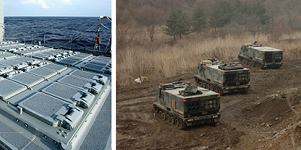
For the last week, her team worked vigorously with the 2nd Combined Arms Division’s Artillery Brigade, their G2, and MAJ Armstrong’s Military Intelligence Advisor Team to establish a series of linked Target Areas of Influence (TAIs) and triggers. They integrated real time data from the SFAB MATs forward with the Gorgan Division’s Battalions as well as the GAF units themselves. Despite the Donovian attempt to deny U.S. access, some U.S. forces managed to join the GAF. While the amount of U.S. ground forces remained minimal, next generation theater-level precision long range fires, various naval platforms in the Black Sea, and the few U.S. MLRS rocket systems in Poti were all on standby to hit thousands of key targets identified over the last weeks in preparation for this very moment. CPT Young looked behind her to the GAF vehicles and cannons assuming their first of multiple preplanned attack and firing positions. She was amazed at how smoothly this week had gone, but then she thought to herself, “You can’t surge trust.” The GAF had been working with her SFAB for years, building interoperability and long-term relationships. Her team’s gunnery sergeant had worked with this same brigade on his first SFAB rotation. All that work had led to this point.
 Momentarily amazed about the beauty of sunsets in the Caucuses, CPT Young noticed how a streak of fire red clouds cut across the orange, yellow, and purple sky, and became immersed in the relative calm that had fallen over the combined forces. She thought the portent of red fire in the sky was a fitting herald of the coming death and destruction soon to be unleashed. CPT Young quickly snapped back to reality when her Section Chief informed her MAT4111, imbedded with the 21st GAF Scout Battalion, just populated the first Donovian icons on the combined U.S.-Gorgan common operating picture. Calmly, she put on her helmet, looked at the coalition fires status on her forearm display, highlighted targets the GAF
Momentarily amazed about the beauty of sunsets in the Caucuses, CPT Young noticed how a streak of fire red clouds cut across the orange, yellow, and purple sky, and became immersed in the relative calm that had fallen over the combined forces. She thought the portent of red fire in the sky was a fitting herald of the coming death and destruction soon to be unleashed. CPT Young quickly snapped back to reality when her Section Chief informed her MAT4111, imbedded with the 21st GAF Scout Battalion, just populated the first Donovian icons on the combined U.S.-Gorgan common operating picture. Calmly, she put on her helmet, looked at the coalition fires status on her forearm display, highlighted targets the GAF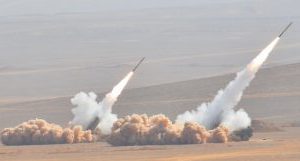 allocated to U.S. platforms, selected a secure frequency not being jammed, and keyed her mic, “Battery C, Forerunner 6, Fire for Effect…”
allocated to U.S. platforms, selected a secure frequency not being jammed, and keyed her mic, “Battery C, Forerunner 6, Fire for Effect…”
While this narrative is fiction, it is exactly what SFABs are purpose-built to achieve and what Advisors train for. Trust and interoperability cannot be surged and the ability to rapidly build and leverage combined integrated combat power is predicated on the daily activities of SFABs’ objective based  campaigning. The role of SFABs as an inside force is critical to operationalizing both the Army’s MDO concept and the NDS’ core tenet of integrated deterrence. Moreover, SFABs address an enemy’s most likely (competition below levels of armed conflict) and most dangerous (large-scale ground combat operations) courses of action concurrently. Advisor Teams are at the forefront of U.S. security strategy in an average of 37 countries daily, and will remain so in 2030 and beyond.
campaigning. The role of SFABs as an inside force is critical to operationalizing both the Army’s MDO concept and the NDS’ core tenet of integrated deterrence. Moreover, SFABs address an enemy’s most likely (competition below levels of armed conflict) and most dangerous (large-scale ground combat operations) courses of action concurrently. Advisor Teams are at the forefront of U.S. security strategy in an average of 37 countries daily, and will remain so in 2030 and beyond.
If you enjoyed this post, check out the following previous posts by MAJ James P. Micciche and CW3 Nick Rife: In Medias Res and Weighing Effort in the Future Strategic Environment 2028-2035
… as well as the following related TRADOC G-2 and Army Mad Scientist content:
DATE WORLD training environments — spanning Africa, Caucasus, Europe, and the Pacific — on the TRADOC G-2‘s OE Data Integration Network (ODIN) webpage
Russia Landing Zone and China Landing Zone — with a host of current information on these adversaries — on the TRADOC G-2‘s Operational Environment Enterprise public facing page
The Operational Environment (2021-2030): Great Power Competition, Crisis, and Conflict, along with its source document
Alternate Futures 2050: A Collection of Fictional Wartime Vignettes, by LTC Steve Speece
Are We Ready for the Post-digital Hyper-war? by Capt Martin Crilly, British Army
In It to Win It: Competition, Crisis, & Conflict
Is Ours a Nation at War? U.S. National Security in an Evolved — and Evolving — Operational Environment and the comprehensive publication from which it was excerpted — Is Ours a Nation at War? Proceedings for the TRADOC G-2 2021 “Role of America’s Army in National Defense, 2021-2030” Campaign of Learning, published by our colleagues at the Center for Army Lessons Learned (CALL)
Two Vignettes: How Might Combat Operations be Different under the Information Joint Function? by proclaimed Mad Scientist Dr. Christopher Paul
SAVE THE DATE: Join Army Mad Scientist and the National Museum of the United States Army (NMUSA) for the Back to the Future: Using History to Forecast conference on 08-09 November 2022, at Fort Belvoir, Virginia. This event will feature world-renowned expert speakers and panelists from  industry, tech, academia, and the U.S. military and other government agencies discussing how history and experience inform and shape our future thinking and decision-making on critical issues. These historians, futurists, and thought leaders will converge backcasting with futurecasting to provide penetrating insights on Army people, materiel, readiness, and doctrine and concepts initiatives. Stay tuned to the Mad Scientist Laboratory for more information on our first in-person conference since 2019!
industry, tech, academia, and the U.S. military and other government agencies discussing how history and experience inform and shape our future thinking and decision-making on critical issues. These historians, futurists, and thought leaders will converge backcasting with futurecasting to provide penetrating insights on Army people, materiel, readiness, and doctrine and concepts initiatives. Stay tuned to the Mad Scientist Laboratory for more information on our first in-person conference since 2019!
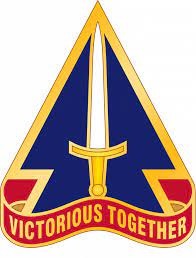 About the Author: James P. Micciche is a Major and a Strategist in the U.S. Army. He is the G5 at the Security Forces Assistance Command (SFAC). He holds degrees from the Fletcher School at Tufts University and Troy University.
About the Author: James P. Micciche is a Major and a Strategist in the U.S. Army. He is the G5 at the Security Forces Assistance Command (SFAC). He holds degrees from the Fletcher School at Tufts University and Troy University.
Disclaimer: The views expressed in this blog post do not necessarily reflect those of the U.S. Department of Defense, Department of the Army, Army Futures Command (AFC), or Training and Doctrine Command (TRADOC).

